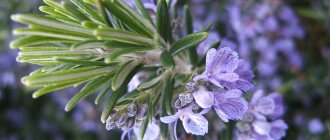Author: Elena N. https://floristics.info/ru/index.php?option=com_contact&view=contact&id=19 Category: Garden plants Published: February 09, 2019Last edits: January 20, 2021
- When to plant
- Growing conditions
- How and when to collect seeds
- Iberis bitter (Iberis amara)
Iberis is a perennial garden plant. In nature, it is most common in Spain, which is why it received such a name: Iberia was once called the peninsula on which Spain and Portugal are located. Iberis is in great demand in landscape design because it has beauty and unpretentiousness.
In our article you will find recommendations for growing Iberis from seeds and you will be able to find out:
- what plant varieties are most popular;
- when and how to sow Iberis for seedlings;
- when to transplant seedlings into open ground;
- how to care for Iberis;
- how to collect plant seeds;
- how to prepare Iberis for wintering.
Description of Iberis: varieties and varieties
The plant includes many subspecies, the height of which reaches 10-45 cm. The culture is distinguished by a squat tree-like base and has green shoots that are directed upward. Some Iberis flowers have branches that spread horizontally.
Iberis has excellent decorative properties
The plant has narrow oblong leaves of a rich emerald color. Flowering begins in May and lasts two months. The bushes are decorated with many buds. Iberis flowers are small and are placed in bunches on the plant. They can have different colors - white, purple, red, lilac or pink.
After pollination, small pods filled with seeds appear on the bushes. Within 2-4 years they can be used for planting.
According to their lifespan, Iberis are either annual or perennial. The first group includes Iberis umbrella and bitter.
Bitter iberis has pubescent stems that reach 30 cm in height. The leaves of the plant are small and pointed. The bushes are decorated with small white flowers.
Umbrella Iberis has a branched structure. Its stems are not covered with fluff. The plant reaches a height of 40 cm. It is decorated with white inflorescences, which are present on the bushes for up to 3 weeks. Iberis umbellata variety Garnet Ice has spectacular white and red buds.
The plant has many varieties
Perennials include the following types of plants:
- Iberis evergreen. This is one of the most common varieties that can be a decoration for any garden. The culture is characterized by many white inflorescences. White Iberis is very easy to care for. It needs to be watered in dry weather and faded flowers removed. Famous varieties of evergreen Iberis: Whiteout, Snowflake, Findall.
- Gibraltar. This plant is unpretentious, which is why many gardeners prefer to grow it. The culture has a neat appearance and soft purple inflorescences. The bushes grow no more than 10-15 cm. A popular variety of this Iberis is Candytaft.
- Crimean. The culture is a low perennial plant. It grows a maximum of 9-12 cm. Before blooming, the buds are pale purple, then they turn white.
- Rocky. This plant spreads along the ground. Its shoots do not exceed 15 cm in height. Rocky Iberis is characterized by abundant flowering, during which the foliage is practically invisible.
- Chameleon. The petals of this species shimmer beautifully from white-pink to violet. The culture is characterized by a pleasant sweet aroma.
Planting site, soil
Perennial sweet peas - growing from seeds
The culture grows well, blooms profusely and looks attractive in well-lit areas. Although Iberis can be planted in a shaded place. The culture is often used when decorating alpine hills and rockeries, choosing not the sunniest areas.
Important! In order for a flower to grow fully and bloom profusely, it requires loamy soil. Iberis should not be planted in soil that is too dense or dry.
Iberis: growing from seeds, when to plant
The crop is grown by seed or vegetative methods. Most often it is planted with seeds. Many varieties of the plant are grown in open ground.
It is recommended to plant seeds in April. If you need to extend flowering until the end of September, they are planted twice. In this case, it is necessary to sow planting material at intervals of 2-3 weeks.
The first shoots will appear in 1-2 weeks. At this point, the bushes need to be thinned out. Iberis emerges quite quickly, so the distance between flowers needs to be 12-15 cm.
The crop is also planted in open ground before winter. Thanks to this, sprouts will appear in the spring.
Planting seedlings
If you plan to grow Iberis from seeds, when should you plant them as seedlings? It is best to do this in mid-March. Seed material is placed 1 mm deep in the soil. It should be sprinkled with river sand on top and covered with glass. Thanks to this, it will be possible to maintain the required soil and air humidity.
Plantings should be in a warm and bright place. You need to water the plants very carefully. It is best to use a spray bottle for this purpose. Iberis has a rather fragile root system, so picking the bushes is not recommended.
The crop can be grown in seedlings
Answers to frequently asked questions
Which soil to buy for seedlings?
Answer: special soil for seedlings.
How can you stimulate seed germination?
Answer: by soaking and treating with growth stimulants.
Why don't the seeds germinate?
Answer: improper storage affected germination, temperature conditions were violated, and sowing rules were violated.
Why do seeds soak before sowing?
Answer: for faster germination and disinfection.
How to harden seedlings?
Answer: starting from 2-4 days after germination, take it out to the balcony or fresh air for a while.
What to do if the seedlings don't grow?
Answer: use growth stimulants, observe what caused the growth to stop (excessive watering, low light).
Watering and loosening the soil
Clivia flower - home care and cultivation
Planting and caring for perennial Iberis in open ground has certain features. The crop should be watered only in very hot and dry weather. The soil must be completely saturated with water, but there should be no stagnation of liquid near the roots. Rare watering does not harm the crop.
After each moistening of the soil or precipitation, the soil must be loosened. This helps saturate the roots with oxygen and nutrients.
What climate is it suitable for?
In the wild, Iberis is found mainly in the mountains of southern Europe and Asia Minor, in the Caucasus, Crimea and on the banks of the Don, so the optimal climate for it is hot or temperate. It withstands frost, but reacts poorly to sudden temperature changes and lack of snow. Accordingly, it is better to cover the plantings for the winter - if the temperatures are too low and there is too much precipitation, the plant may die. Otherwise, Iberis is quite hardy, and its cultivation does not require any special conditions.
Iberis is an excellent honey plant
Reproduction methods
Iberis can be propagated in different ways:
- seed survival;
- dividing the bush;
- cuttings.
Seeds
Small petal perennial or Erigeron - planting and care
To obtain seedlings, seeds are planted in containers with peat in March. At a temperature of 18 °C, sprouts appear after 10 days. They need to be slightly moistened. The crop is moved to open soil in mid-May. You can plant seeds directly into the ground. This is done in April. Bushes grown by seed will bloom only in the second year.
By cuttings
For this procedure, you need to wait until the crop has finished flowering. From the shoots it is necessary to cut small cuttings measuring 5-8 cm. They should be soaked in a growth stimulator and then moved to moist soil.
Important! It is recommended to cover the planting site with a glass container, which is removed after the end of frost. In winter, plants are additionally insulated with sawdust and soil.
Dividing the bush
An adult plant over 5 years old should be dug up in the spring before the beginning of the growing season. After cutting the top part of the bush, you need to divide it into equal fragments and plant them in prepared places. The soil around the shoots needs to be compacted and watered.
To decorate your garden plot, you can use ready-made seedlings, which are sold in flower shops. To choose high-quality planting material, you need to pay attention to its appearance. It is important that the bushes do not show symptoms of disease or damaged areas.
Iberis can be propagated in different ways
Bad days for growing Iberis seedlings in 2022
Here are the dates on which you should not sow Iberis seeds:
- in January: New Moon - 13, Full Moon - 28, Aquarius days - 14, 15;
- in February: New Moon - 11, Full Moon - 27;
- in March: New Moon - 13, Full Moon - 28;
- in April: New Moon - 12, Full Moon - 27;
- in May: New Moon - 11, Full Moon - 26.
The lunar calendar is not the only thing that should be followed when sowing Iberis seeds.
Feeding and replanting
The amount of fertilizer depends on the type and characteristics of the soil on the site. If the soil has a poor composition, standard complex fertilizers must be applied 2 times a year. In spring and summer, you can use Nitrophoska.
Important! An excellent option would be to use organic fertilizers. They can be embedded in the ground or used as a mulch layer.
Excessive feeding causes rapid growth of the bush. In such a situation, you will have to constantly adjust its size. When growing a flower in fertile soil, it is permissible to apply fertilizer once every 2-3 years.
It is not recommended to replant Iberis often. If the taproot is damaged, it will quickly die. This will lead to the death of the culture. Bushes can be replanted after 5 years. Older crops bloom more sparingly, so plants need rejuvenation.
Pests and diseases
Iberis is often affected by scale insects and flea beetles. They eat the stems and leaves of the flower. To cope with parasites, you need to use special drugs. The drug Aktara is highly effective. It is important to systematically irrigate the soil around the bush.
In addition, the plant may suffer from aphid attacks. Its appearance can be suspected by whitish spots on the leaves and drying of flower shoots.
Important! To get rid of aphids, you should use a liquid solution of potassium soap. You can also use tobacco decoction.
The culture has a rather weak root system. It often encounters fungal infections and rots. Warning signs in this case include growths on the roots, slower development of the crop, and yellowing of the foliage.
To prevent fungal infection, it is necessary to treat the area with fungicidal preparations. It is recommended to do this before planting the crop in the soil. The affected plant must be destroyed and the soil treated again with the drug.
Possible problems when growing a flower
As already mentioned, Iberis loves a warm, illuminated place and well-drained soil. If the plant does not like the conditions or care, then various problems appear, which include:
- fungal diseases;
- pests, in particular mealybug and cruciferous flea beetle;
- diseases of the root system: due to the abundance of moisture, it begins to rot;
- diseases of buds and foliage.
Mealybug - white coating on shoots.
Treated with garlic infusion, Mospilan, Aktara. Solving these problems is not difficult. It is enough to promptly remove or treat infected plants, replant healthy ones in a new place, and also treat the soil with special solutions.
How to prepare for winter
Iberis is a fairly frost-resistant plant, but in a snowless and severe winter the crop may freeze. The perennial plant hardly tolerates temperature fluctuations and the change from frost to thaw.
In order for a crop to survive the winter normally, even in the middle zone it needs to be covered. This procedure is carried out in the last ten days of autumn. Fallen leaves and spruce branches will provide excellent protection from frost. Ordinary dry branches are also suitable. They need to be made of layers of hay and straw.
Flowering period and after care
Iberis have a special bud development schedule. The culture blooms in May and August. At the same time, lush flowers decorate the bushes for not too long - on average 2 months. After flowering is completed, oval or bivalve pods appear on the plants. They are filled with seeds inside.
Important! After flowering ends, the stems need to be cut by a third. Thanks to this, it will be possible to make the bushes more neat.
With proper care, Iberis blooms profusely
When to sow Iberis seedlings in 2022, depending on the month
To grow strong and healthy seedlings, some gardeners use the lunar calendar. It is believed that the Moon's magnetic field affects the growth and development of plants.
In January 2021, favorable dates for sowing Iberis: 16-27.
In February these days are: 12-26.
In March, you should stick to the dates: 14-27.
In April you need to plant Iberis: 13-26.
In May, the best days for planting are: 12-25.
Use in landscape design
Plants are often used in landscape design. When properly created, flower beds can form intricate patterns.
Iberis look great in the structure of ridges and mixborders. They can be used to decorate the edges of borders. Group plantings of flowers are used to decorate garden paths.
The flower goes well with evergreens, such as juniper or cypress. Low-growing varieties can be used to decorate rock gardens and rocky hills.
Dwarf crops harmonize well with drought-resistant ground covers. These include creeping phlox, creeping tenacious, sedum. Delicate Iberis flowers can be combined with large bells.
Iberis is often combined with gazania, yarrow and small marigolds. A spectacular composition is obtained with the participation of phlox and tulips. However, flowers should not be combined with ground cover perennials.
The culture fits perfectly into garden compositions
When growing Iberis plants, planting and care must be carried out according to all the rules. This culture is considered quite unpretentious, but in order to achieve abundant flowering, you need to follow certain recommendations.
Suitable site
Iberis is a sun-loving plant. In nature, it lives on rocky and sandy loam, breathable soils. Even in light shade it withers away. Also, areas with temporary and especially permanent stagnation of water are contraindicated for it.
Iberian is great for alpine slides
This flower crop does not tolerate proximity to tall shrubs and trees that create shade. With a lack of sunlight, flowering is poor or absent altogether. At the same time, these shrubs go well with many ornamental plants.
Attention! If you want to preserve the purity of the variety, then it is better not to do group plantings. Adjacent bushes quickly cross-pollinate.
In order for the plant to please with its color longer, sowing is carried out in several stages, with a difference of 14 days.











